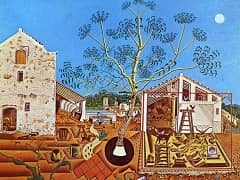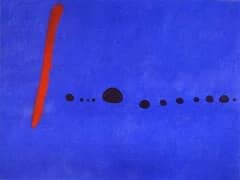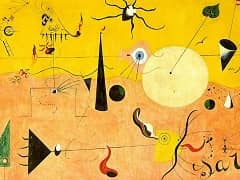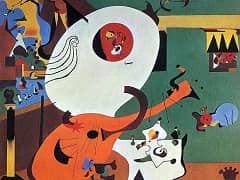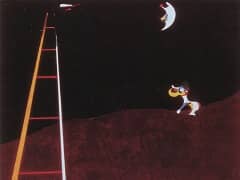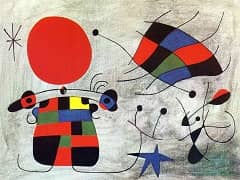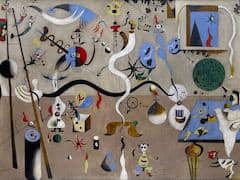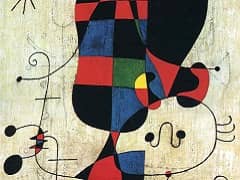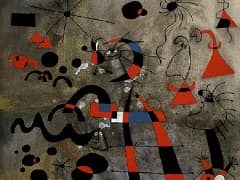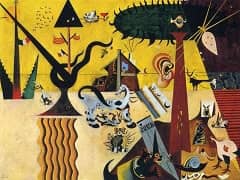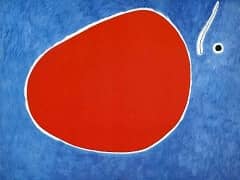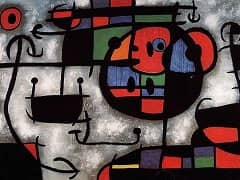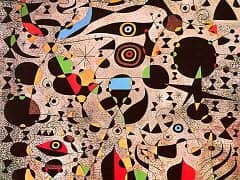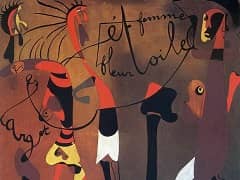The Red Sun, 1950 by Joan Miro
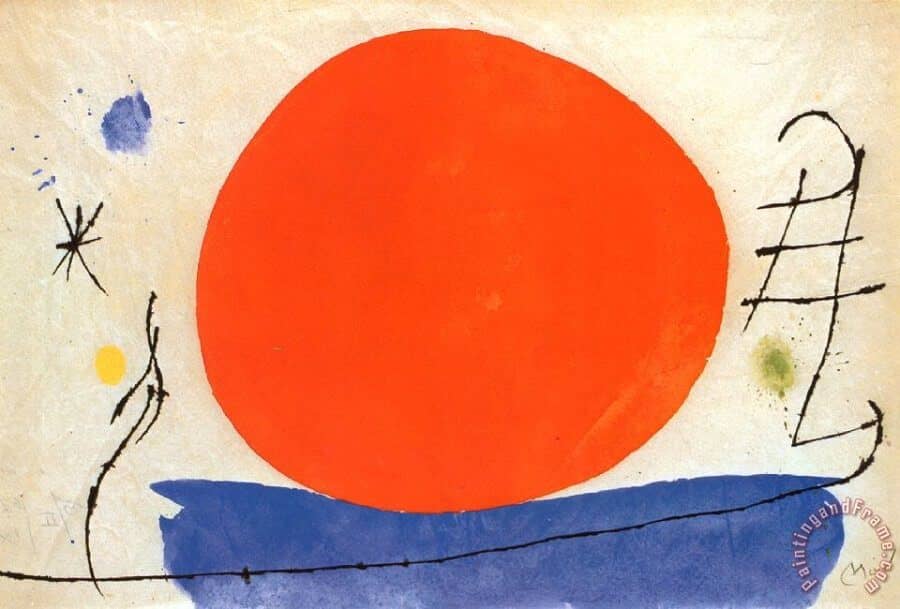
The art and culture of Joan Miro's native Catalonia were powerful forces in his painting and are reflected in both the playful effervescence and the dramatic intensity of his radical forms. Added to this inspiration were the influences he was exposed to in Paris: the poetry of the Parisian symbolists and surrealists, and the example of Paul Klee and the structural discipline of the cubists. This confluence nurtured a singular style at once earthy and spiritual, sensual and ethereal, but universal in expression. For Miro, this aspect was all important; he felt that painting ought "to rediscover the sources of human feeling."
Further influences had come to play upon the restless imagination of Miro by the 1940s, when his preoccupation with music and with the nocturnal sky brought a lasting sense of mystery and contemplative awe to his work. Miro's illustrations for Paul Eluard's poems, for which he was inspired by a Japanese woodcut artist, may have contributed to the calligraphic effect of the heavy black "signs proliferating in his imagery." A new interest in poetic titles emerged in the late 1940s, a lyric suggestiveness possibly inspired by illustrations for writings of Eluard and Tzara. Several works from 1948 share the theme and motifs of this painting. In addition, Miro had been overwhelmed by the urban scene of New York, where he had reestablished contact with Alexander Calder, Yves Tanguy, Marcel Duchamp, and had met Jackson Pollock. In fact, the raw mien of abstract expressionism may have been a source for the renewed excitement with materials that he referred to in an interview in the late 1940s, given shortly before executing The Red Sun.

